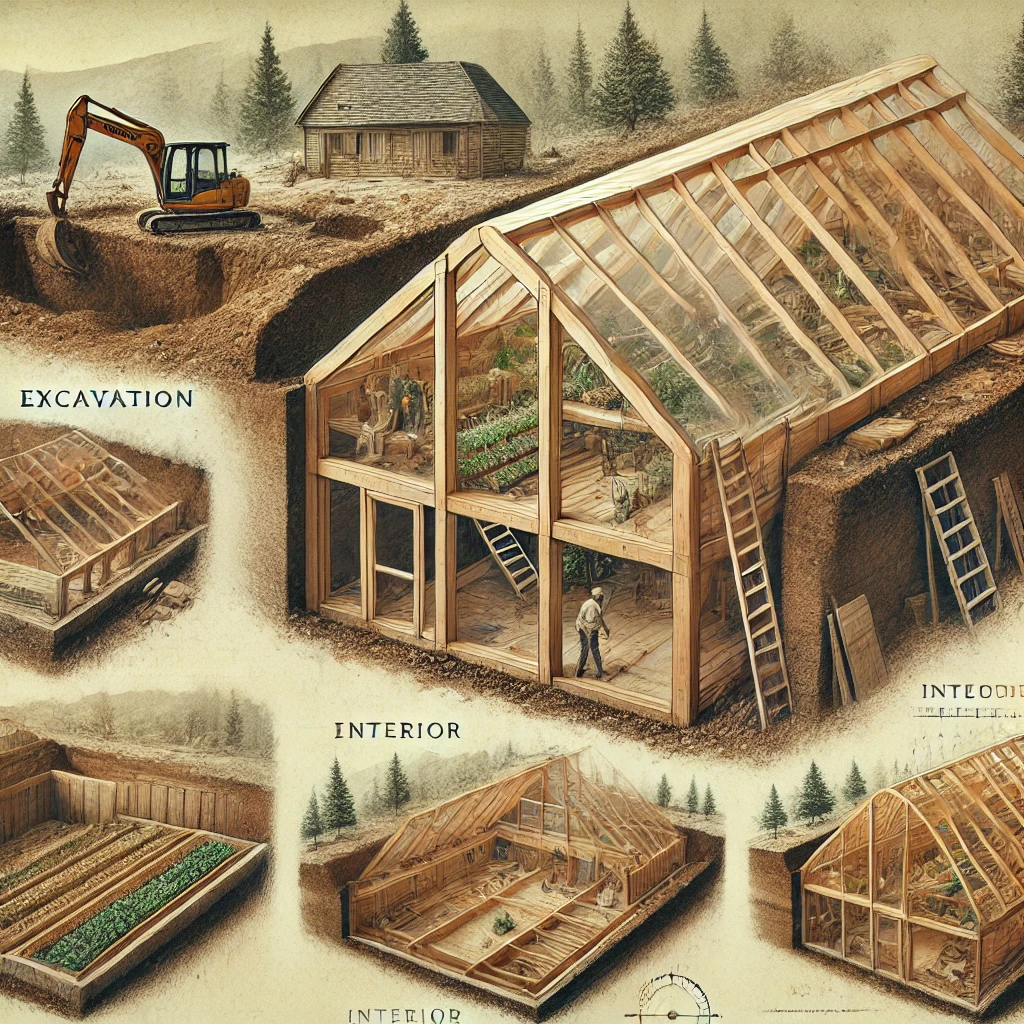Growing plants year-round, especially in cooler or unpredictable climates, can be challenging. However, an underground greenhouse, also known as a ‘walipini’ or ‘pit greenhouse,’ offers a sustainable solution. By utilizing the Earth’s natural insulation, these structures maintain stable temperatures, protect plants from extreme weather, and extend the growing season.
1. Advantages of an Underground Greenhouse
- Thermal Stability: The earth provides natural insulation, maintaining a relatively stable temperature even just a few feet below the surface.
- Protection from the Elements: These greenhouses are sheltered from wind, snow, and hail, reducing the risk of damage.
- Extended Growing Season: The stable environment allows for cultivation during cooler months.
- Sustainability: The natural insulation minimizes the need for heating, making it energy efficient.
2. Choosing the Right Location
- Sunlight: Select a location with maximum sun exposure. In the Northern Hemisphere, south-facing spots are ideal, while north-facing is preferred in the Southern Hemisphere.
- Water Drainage: Ensure good drainage to avoid water accumulation. Raised beds or gravel paths can help improve drainage.
- Accessibility: Choose a spot that is easy to access throughout the year.
3. Building the Underground Greenhouse
a. Excavation
- Depth: Dig 8-10 feet deep to benefit from the Earth’s natural insulation, adjusting based on your region’s frost line.
- Dimensions: A typical size might be 10×20 feet, but adjust according to your needs.
b. Walls
- Construct walls using bricks, stones, or earthbags. Reinforce with concrete if needed.
- Insulate the northern wall to retain heat using materials like straw bales or foam insulation.
c. Roofing
- Use UV-resistant greenhouse plastic, polycarbonate panels, or glass for the roof.
- Ensure the roof is sloped for maximum sunlight exposure and to allow rain and snow runoff.
d. Flooring
- A gravel floor improves drainage. Alternatively, you can use concrete or leave the floor as natural soil.
e. Ventilation
- Install vents or windows at the higher end of the sloped roof to let hot air escape.
- Consider doors at each end for airflow and accessibility.
4. Maintaining the Underground Greenhouse
- Monitoring: Regularly check temperature and humidity levels. Installing a thermostat can help automate this process.
- Pest Control: Underground greenhouses may attract specific pests, so inspect regularly and use natural deterrents.
- Watering: Adjust your watering schedule based on the humidity and plant needs. Avoid overwatering to prevent drainage issues.
5. Additional Tips
- Water Barrels: Place water barrels inside to absorb heat during the day and release it at night, helping to stabilize temperatures.
- Raised Beds: Use raised beds to avoid waterlogging and root rot.
- Reflective Surfaces: Use reflective materials on the walls to maximize light distribution.
Conclusion
An underground greenhouse is a fantastic, sustainable way to grow plants year-round, even in colder months. While it requires some upfront effort and investment, the reward of fresh, home-grown produce makes it worthwhile. Regular maintenance and care will ensure optimal growing conditions for your plants, leading to a thriving greenhouse all year long.
